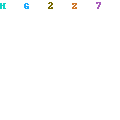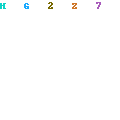To keep our promises, let’s return to the "printf" statements for a definition of how they work.Notice that they are all identical and that they all begin just like the "printf" statements we have seen before. The first difference occurs when we come to the % character. This is a special character that signals the output routine to stop copying characters to the output and do something different, namely output a variable. The % sign is used to signal the start of many different types of variables, but we will restrict ourselves to only one for this example. The character following the %sign is a "d", which signals the output routine to get a decimal value and output
it. Where the decimal value comes from will be covered shortly. After the "d", we find the familiar \n, which is a signal to return the video "carriage", and the closing quotation mark. All of the characters between the quotation marks define the pattern of data to be output by this statement, and after the pattern, there is a comma followed by the variable name "index". This is where the "printf" statement gets the decimal value which it will output because of the "%d" we saw earlier. We could add more "%d" output field descriptors within the brackets and more variables following the description to cause more data to be printed with one statement. Keep in mind however, that it is important that the number of field descriptors and the number of variable definitions must be the same or the runtime system will get confused and probably quit with a runtime error. Much more will be covered at a later time on all aspects of input and output formatting. A reasonably good grasp of this topic is necessary in order to understand everything about output formatting at this time, only a fair understanding of the basics.Compile and run oneint.c and observe the output
it. Where the decimal value comes from will be covered shortly. After the "d", we find the familiar \n, which is a signal to return the video "carriage", and the closing quotation mark. All of the characters between the quotation marks define the pattern of data to be output by this statement, and after the pattern, there is a comma followed by the variable name "index". This is where the "printf" statement gets the decimal value which it will output because of the "%d" we saw earlier. We could add more "%d" output field descriptors within the brackets and more variables following the description to cause more data to be printed with one statement. Keep in mind however, that it is important that the number of field descriptors and the number of variable definitions must be the same or the runtime system will get confused and probably quit with a runtime error. Much more will be covered at a later time on all aspects of input and output formatting. A reasonably good grasp of this topic is necessary in order to understand everything about output formatting at this time, only a fair understanding of the basics.Compile and run oneint.c and observe the output

